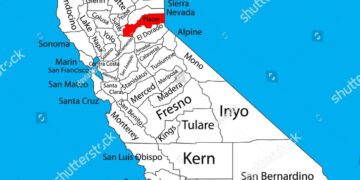Mexico is a fascinating place. The Central American nation is obviously well known in the United States, with which it shares its entire northern border. But beyond just being the major country south of the U.S., Mexico has a fascinating history. Politically, economically, socially, and culturally, it is a powerhouse.
Its people and businesses produce and manufacture an incredible amount of goods that are shipped all over the world. Its cultural exports are top-notch and very well-recognized in nearly every corner of the globe. Oh, and how could we talk about Mexico without talking about its food? Its impact on culinary culture in the USA and the rest of the world is stunning and expansive.
But enough about all the basic, popular stuff. What about events and situations in Mexican history that relatively few people know about? Even many Mexican people don’t know everything about their proud country’s incredible history since it’s been around in one form or another for such a long time.
So that’s what we are here to make clear today. In this list, we’ll examine ten fascinating facts about events from Mexican history. You may not have heard about these—and that’s the whole point! Mexico has many secrets to share, and today, we’ll share ’em!
Related: Top 10 Places That Were Once Their Own Countries
10 The Taco Revolution
When the Spanish conquistadors first arrived in Mexico centuries ago, they looked down on native foods. They felt that the locals ate things that were beneath human beings and essentially only fit for dogs and other animals. The rice-and-beans-and-meat tradition of modern-day Mexico and its offshoots in Tex-Mex cuisine was a bit more primitive back then, but it was the same general idea.
Without mincing words… the Spanish hated it! The conquistadors felt tacos and other Mexican-style foods were low-class and uncivilized. So they did their best to make sure the indigenous people of Mexico would dine on “civilized” Spanish food and other European staples. Spoiler alert: it didn’t work.
For one, many Native deities were associated with corn—a staple in Indigenous cuisine—while the Christian holy Eucharist was more closely linked to wheat. So the Spaniards tried to get the Mexicans to adopt their wheat while they adopted their Christianity. Neither one really took for a while (at least not smoothly and without resistance).
In time, the Indigenous people, who became known as Mexicans, started to find power in their tacos and other food choices. While Spaniards looked down their noses at native cuisine, the locals saw their food as being divinely inspired by the Aztecs who had come before them. In a very uplifting way, these locals used food to give them a sort of divine salvation over their political power and (soon) independence.
So while tacos didn’t cause the revolution, eating them indicated to natives that they were separate from the conquering Spaniards and, thus, a more tightly knit and closely connected group seeking to make their own way in the world.[1]
9 A Dog Day Afternoon
This Ugly-Cute Hairless Dog Has a Surprising History | Nat Geo Wild
Centuries ago, the Aztec empire reigned over Mexico. As part of their control of all the civic, political, economic, and cultural life in the area, they had quite a few unique and very popular public practices that people enjoyed following. With that, their religious community and faith-based life were completely uncontested for a long time. And as it turns out, one of those religious beliefs that flourished long ago in Mexico had to do with dogs.
Back then, the Aztecs believed that Xoloitzcuintl dogs—commonly known today as the “Mexican hairless” breed of canine popular as a pet and guard dog—were critical players in the afterlife. According to what they believed, Aztecs held that these Xoloitzcuintl dogs guided the recently dead through the underworld. These dogs were there in the afterlife to be sure that dead souls got to the destinations where they needed them to be.
The dogs then became the protectors of these newly departed human souls as they acclimated themselves to the afterlife. That’s a pretty big deal! And the practice lives on today… sort of. In what has become a new tradition for both Mexican people in their homeland and Mexican-American immigrants to the southwestern part of the United States, October 27 has become a “Dia De Los Muertos” celebration day for dogs!
Mexican believers of the holiday use the 27th as a day to put up special shrines for their long-lost dogs, cats, and other deceased pets throughout their homes. Those shrines are a throwback to the ancient Aztec beliefs about Xoloitzcuintl dogs and the afterlife. And they are a wonderful (and emotional) way to honor pets that have passed on. It’s all so sad and sweet, right? We’re not crying; you’re crying![2]
8 The Pastry War
In the 1820s, a French-born pastry chef named Monsieur Remontel was working at a pastry shop he’d set up in Veracruz, Mexico. That sounds random, but the French had a presence in Mexico back in the day—and for a time, they were hoping to conquer and colonize the area in much the same way as the Spanish. By the late 1820s, though, this interest was beginning to thaw.
By 1828, Mexican soldiers were getting sick of the French and their continued presence in Veracruz and other cities. That’s where Monsieur Remontel comes in. See, that year, he lobbied his own government back in Paris to demand that the Mexican government pay him more than 600,000 pesos after Mexican soldiers allegedly destroyed his pastry shop. The Mexican government refused, and for a while, that was that.
But Remontel didn’t forget his gripe, and neither did the French. A decade later, in 1838, Remontel personally appealed to King Louis-Philippe in Paris for help. It’s practically a certainty that Remontel greatly exaggerated the damage done to his shop and the cost of all that. But the appeal worked on King Louis-Philippe, who was already upset that many other French investors and expatriates had been struggling with their business ventures elsewhere in Mexico.
So the king again demanded that the Mexican government compensate Remontel—and other French expats making a go of it in the New World. Oh, and there was one other issue at the time: Mexico’s government was in default after failing to pay back millions and millions of dollars worth of loans previously sent their way by France. So, yeah, it wasn’t just about a pastry shop. It never is…
Tensions heightened with the king involved, and France’s Baron Beffaudis eventually gave the Mexican government an ultimatum: pay back the damages to Remontel or else. The president of Mexico, a man named Anastasio Bustamante, ignored the ultimatum completely. Bad move! In April of 1838, pissed that the Mexicans apparently weren’t going to pay a dime back to Remontel, the king, or to any other Parisian investor, a French fleet under Admiral Charles Baudin sailed to Veracruz.
They reached the Caribbean side of Mexico and eventually blockaded every port from the Rio Grande down to the Yucatán Peninsula. They even captured nearly the entire Mexican navy! For months, the French blockaded Mexico, fired on fortresses from the sea, and even occupied the city of Veracruz for a while. In total, more than 30,000 French soldiers took part in their country’s assault on Mexico. The “Pastry War,” as it came to be known, ended in March 1839 after Mexico finally backed off and met France’s demands.[3]
7 Mass Hysteria
5 Strange Cases of Mass Hysteria
In late 2006, young women who were students at an all-girls school in Mexico City began to develop some very bizarre health issues. It all started with just a few girls feeling the effects of some unforeseen problem in late November and throughout December. Then, when the girls returned to school in early 2007 after the Christmas holiday break, the plague spread wildly.
From just a few sick girls to a few dozen to eventually a few hundred, it seemed like nearly every single girl in the austere Roman Catholic boarding school was suddenly experiencing wild waves of nausea, partial and temporary paralysis, vertigo, fever, anxiety, and more. The nuns who ran the school were horrified at the rapid onset of the symptoms. They wondered what could possibly be causing the problems.
Unsurprisingly, they worried that an environmental factor was suddenly putting all the girls’ health outcomes at risk. The authorities rushed in to investigate the school building and its neighboring surroundings. But amazingly, the girls’ symptoms eventually went away with no known cause—and no known cure. It was as if whatever sickness had afflicted them was suddenly long gone, having disappeared for good just as soon as it came to be in the first place.
Public health experts eventually figured out what was going on: a very rare but not unknown case of mass hysteria that swept across the impressionable teenage girls. These types of hysteria have happened in the past, most notably with several instances of so-called “dancing fever” that swept across towns and villages centuries ago.
Now, we know that it appears that the same happened in Mexico City in late 2006 and early 2007 when these Catholic boarding school girls succumbed to nothing at all. Nothing beyond the subconscious impressions made on them by their classmates who were also showing symptoms caused by, well, nothing. Confusing![4]
6 The Tortilla Protests
Food speculation fuels Mexico’s tortilla crisis
After President Felipe Calderon took office in Mexico in the middle of 2006, the price of corn and corn-based goods shot up quickly. By early 2007, tortillas—a staple of most Mexican diets, especially those for poor people throughout the country—were twice as expensive as they’d been less than a year before. That may not seem like a big deal, but Mexicans take their tortillas very seriously.
So they marched on Mexico City by the tens of thousands to protest the high prices and demand President Calderon do something to stem the rising costs. In early January 2007, while the aforementioned schoolgirls in Mexico City’s Roman Catholic boarding house were going through their mass hysteria-induced health problems, farmers and laborers from all over Mexico descended to protest. More than 75,000 of them showed up at the central square of the large urban metropolis one day to share their displeasure.
Mad about tortilla prices, which had increased to 45 cents per pound on average, they demanded President Calderon set up price controls and stem the corn surge. It wasn’t a lighthearted protest about a favorite food, either. Many poor Mexicans in far-flung villages eat tortillas as part of nearly every meal. With prices doubling in such a short time, they found it impossible to feed themselves and their families.
Mexican universities have found that the median poor Mexican person eats about 14 ounces of tortillas daily. That makes up more than a third of their diet—and nearly half of their protein intake! In the end, tortilla prices stabilized, and they came back down again in the coming years, especially during the global recession that kicked off less than two years after these protests. But let it be known that 2007’s public demonstrations prove that Mexicans take their tortillas very seriously![5]
5 The Avocado Wars
Narco Avocados: Violent drug cartels are taking over Mexico’s avocado industry | W5 INVESTIGATION
Sadly, Mexico is notorious for its drug cartels. But in recent years, these cartels haven’t only been selling and trafficking drugs to the tune of billions of dollars in profit; they have also been trafficking legal items like avocados in very illegal ways.
The Mexican state of Michoacan is one of the foremost places in the world where avocados are grown. There, the avocado industry is a billion-dollar engine that fuels nearly everything else economically. And throughout the 2000s and 2010s, the drug cartels took notice of it.
Since the turn of the millennium, drug cartels in Michoacan have been seizing avocado fields from farmers. At first, they intended to dig up the fertile ground and put in marijuana plants in a kind of massive grow operation. But quickly, they came to realize that they could profit significantly from the avocado trade, too. So drug cartels went into business as farmers—by force and coercion.
In the 2010s, a Michoacan-based group called the Viagras began extorting and outright strong-arming farmers into giving up lucrative land and big-time profits. Other cartels from neighboring states jumped on board, too, with outfits like the Jalisco New Generation Cartel willing to use violence to break into the market.
Now, as farm laborers work long hours in the fields growing and harvesting these avocados, drug cartels wage violent battles for control over who gets to sell it. They even charge farmers money to guard the land from other cartels, with some prices at $250 per hectare in “protection.”
The so-called “Avocado Wars” began to really blow up into the public consciousness in 2019. Now, innocent Michoacan residents are caught in the middle of a literal firefight brought about to go after the profits earned from the worldwide demand for avocados and guacamole.[6]
4 Beware of the Chupa!
El Chupacabras, a Modern Mystery | Monstrum
You can’t talk about Mexican culture without talking about the “chupacabra.” While this (hopefully) mythical creature was first “reported” in Puerto Rico in the mid-1990s, its legend spread quickly to many other Spanish-speaking countries. Today, it is one of the foremost urban legends in Mexico, and it continues to especially take hold in rural areas of the country.
The word “chupacabra” is a portmanteau of two words: “chupar,” meaning “to suck,” and “cabra,” which means “goat.” And that, uh, is exactly what it does. According to legend, this dog-like were-creature is supposedly responsible for killing off all kinds of livestock all across Mexico and dragging the carcasses away to feed on their bloody remains.
The public is divided on what exactly a chupacabra looks like. Some say it is a bear-like creature. Others say it more closely resembles a raccoon and is much smaller but still very ferocious. And many Mexicans swear it is closely related to some kind of wild dog. But that last opinion about the chupacabra actually has some serious basis in Mexican lore. Remember the second factoid way up at the top of this list? The one about the famed Xoloitzcuintl dogs that were prized by the Aztecs way back in the day?
Well, folklore experts think it’s likely that those xolo dogs are the inspiration for the supposed chupacabra that goes around small Mexican villages, eating up livestock and disappearing before the sun rises. And maybe that’s true! But just like Bigfoot or the Loch Ness monster, we sure wish they’d catch one of these things alive and in the act one day…[7]
3 The Tampico Affair
USS Texas and the Tampico Affair
The “Tampico Affair” began as what should have been just a minor incident between some American sailors and the Mexican army. However, it escalated to a near all-out war. On April 9, 1914, a group of American sailors came ashore in Mexico from their ship. They had been tasked with acquiring supplies for the ship. Nine of them were detained by Mexican Federal Army forces who were loyal to the country’s then-dictator General Victoriano Huerta.
The Americans were understandably enraged that their sailors were detained by Mexican forces for what they felt was no good reason. So American Commanding Admiral Henry Mayo demanded publicly that the sailors be released. In addition, Admiral Mayo demanded that the nation of Mexico issue an apology and raise the American flag while offering an official 21-gun salute as penance.
The Mexicans didn’t like that at all. They refused the demand. Angered at the refusal, American President Woodrow Wilson backed his admiral. Then, the conflict escalated when American naval ships took the port city of Veracruz by force. They occupied Veracruz for more than six months throughout most of the rest of 1914. At the time, the Americans did not have diplomatic relations with Mexico.
The Mexican Revolution was in full swing after having begun in 1913, and the Americans had severed their diplomatic relations with the Mexicans after Huerta took power. So there was no mediation to be had. The so-called “ABC” powers (Argentina, Brazil, and Chile) offered to mediate the conflict, but for a while, the Americans turned them down. Eventually, though, cooler heads prevailed. The Mexican Revolution went on, but the Americans backed off from pushing for war. Besides, the U.S. had war in Europe looming at that time and couldn’t extend themselves into Veracruz much longer.[8]
2 Chewed Out over Chocolate
The history of chocolate – Deanna Pucciarelli
In the ancient world, the Mayans and the Aztecs both loved chocolate. It was a snack favored by the ruling classes in each culture, but it was very common and enjoyed by pretty much everyone. That is until the Spanish arrived. The Spanish didn’t quite know what to make of chocolate when they first got to what is now known as Mexico about six centuries ago.
They had seen that Aztec emperor Montezuma drank a reported 50 cups of chocolate a day, and they let that slide because, well, what else could they do? When it came to average indigenous Aztec women, though, the Spanish laid down the law. Worried that chocolate was an intense and powerful aphrodisiac, the Spanish got together with Aztec rulers and forbade local women from consuming it at all. They feared the sexual powers that came about from the consumption of chocolate. And later, they worried about the possibility of it leading to a violent and intense revolution.
That’s not quite all, though. See, the Spanish were also worried about the supposed witchcraft powers that came from making and consuming chocolate. Long-ago legend held for a long time that Aztec women could supposedly get other-worldly powers and cast other-worldly spells on people after brewing chocolate and (seriously) psychotropic mushrooms.
The Spaniards didn’t know the first thing about what was actually going on with either of those substances. They just figured it was a potion of dark magic that meant trouble for the conquistadors and the empire they hoped to build in Mexico and across Latin America. So chocolate was out forever and off the table for good. You know, only when the Spanish were watching.[9]
1 Earth’s Youngest Volcano
Wonders of the Natural World – Paricutin Volcano
In the central Mexican state of Michoacan, there is a very, very young volcano that appeared out of the ground and bubbled up in size beginning less than a century ago. The volcano is called the “Parícutin volcano,” named after a nearby village. Believe it or not, the whole thing only started to expand and grow in 1943.
In February of that year, a local farmer named Dionisio Pulido started to witness the ground cracking open. Within hours, the broken ground revealed a major fissure of steam and ash. Over the next few days, a small cone began to form, and molten lava started flowing from it. It hadn’t even been a week, and suddenly, a volcano was growing and sprouting out of a hole in the Mexican countryside!
For the next decade, the volcano erupted. There were intermittent periods of major activity and minor activity, but for more than nine years, it was going hot and heavy. At its peak, Parícutin got up to about 1,345 feet (410 meters) high. It spewed lava down its sides for periods here and there and completely covered several local villages with ash. For scientists, it was a gold mine—er, a lava mine.
See, volcanoes are very often millions of years old. But with this mighty Michoacan eruption, volcano experts worldwide were able to flock in and watch a volcano develop, expand, and grow into a mountain in real time. The scientific value was immeasurable, allowing experts to better understand how other volcanoes are formed. It’s crazy to think about, isn’t it? Mexico is home to an 80-year-old cinder cone volcano. Not 80,000 or 80 million. Just 80![10]
fact checked by
Darci Heikkinen
>>> Read full article>>>
Copyright for syndicated content belongs to the linked Source : Listverse – https://listverse.com/2024/07/19/10-fascinating-little-known-events-in-mexican-history/































